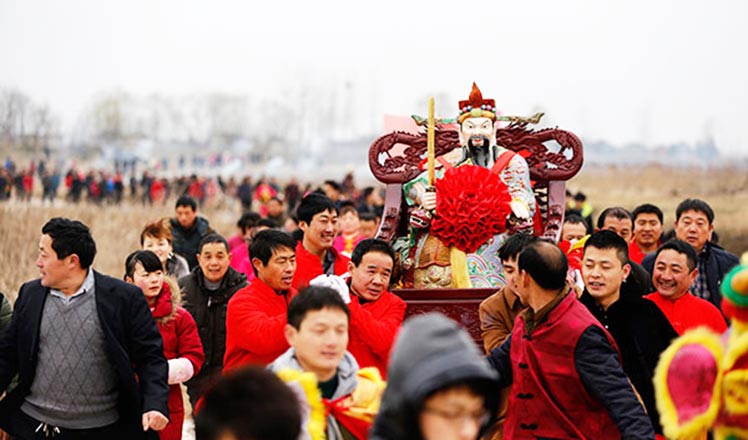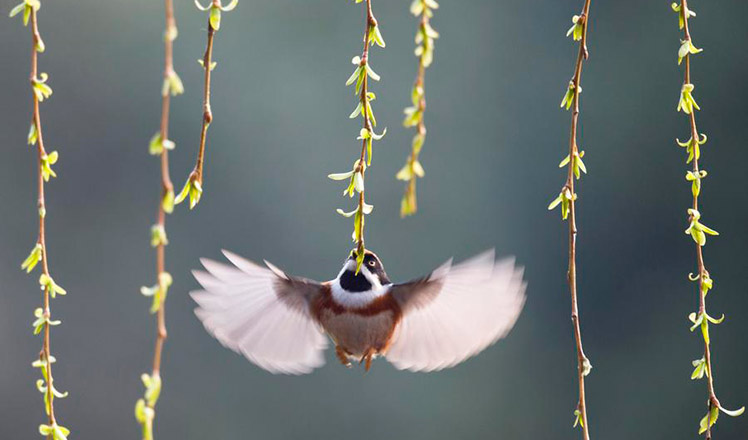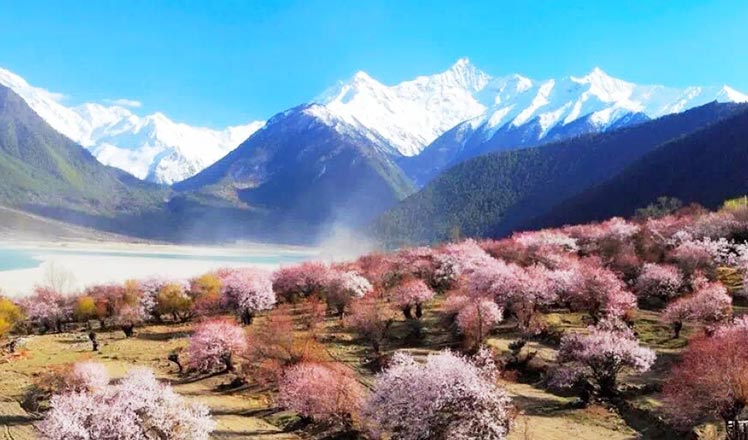Tomb Sweeping holiday brings travelers to life
Updated: 2016-04-06 08:14
By Yang Feiyue(China Daily)
|
||||||||
Warm weather and bountiful blossoms coaxed droves of tourists to use the Tomb Sweeping Day holiday as a chance to grab springtime's tail as the country dashes away from frigid winter and toward sweltering summer.
China's biggest online travel agency, Ctrip, saw more than double year-on-year growth in the number of weekend tourists during the holiday over April 2-4.
Paid vacations, increasing disposable incomes and easier availability of visas encouraged more Chinese to travel, says Ctrip's publicity manager, Yan Xin.
Residents of Beijing and Shanghai remained the most enthusiastic travelers during the holiday. But the expansion of direct flights also lured more tourists from second- and third-tier cities.
At least twice as many residents compared with last year traveled from Sichuan's provincial capital, Chengdu; Jiangsu's provincial capital, Nanjing; and Zhejiang's provincial capital, Hangzhou, Ctrip says.
Roughly 53 percent of tourists from the Chinese mainland took trips spanning four to six days, and 10 percent went on trips lasting seven to 10 days.
"Many took a day or two off before or after the holiday to make a five-day journey," Yan says.
Tacking time on either end of the festival enables trips across, or outside, the country.
Thailand, South Korea and Japan were the top outbound destinations.
Blossom and island trips abroad were also popular.
Sakura blossoms in Japan's Kyoto and Nara, and cherry blooms in South Korea's Jeju Island lured many domestic travelers, Ctrip reports. (Chinese don't need visas to visit Jeju.)
Roughly 60 percent of tourists took domestic trips.
Blossoms in Yunnan's provincial capital, Kunming; Jiangxi province's Wuyuan; Fujian province's Xiamen; Shaanxi province's Xi'an; and Guilin in the Guangxi Zhuang autonomous region drew large numbers of tourists.
About 500,000 visits were made on the holiday's first day to 11 of Beijing's municipal parks and the city's Museum of Chinese Gardens.
The capital city's major scenic spots received 4.9 million visitors during the three-day holiday, up 6 percent year-on-year, the Beijing Municipal Commission of Tourism Development reports.
Guizhou province's polychromatic tulip and rapeseed blossoms helped to attract 9.58 million visits, up 30.8 percent. Tourism income rose 32.25 percent to 4.9 billion yuan ($757 million).
Roughly 30,000 travelers a day descended upon Binhai Park in Fujian's Quanzhou city to view rapeseed flowers.
Peony blossoms in Henan province's Luoyang brought 502,000 visitors to the city's major tourism attractions on April 3, generating 10.7 million yuan in ticket sales.
University campuses with flowering landscapes were also popular with Chinese born in the 1980s and '90s.
Many signed up for individual trips to Wuhan University in Hubei province to see oriental cherry blossoms and to Xiamen University in Fujian to see ceiba blossoms, Yan says.
Domestic travelers' average per-capita spending stood at 3,000 yuan during the holiday, Ctrip says. Outbound tourists generally spent twice as much.
"Tourists are now increasingly willing to spend more for better experiences," Yan explains.
The company's high-end products generally saw a 10 percent rise in bookings compared with the same period last year.
Bookings of packages for small groups tripled. International five-star hotels were the top choice of individual travelers, Yan says.
Indeed, while the flowers will be largely gone by spring's final holiday, May Day, China's travelers have come out of hibernation.

|
A newlywed couple has their picture taken in a rapeseed field in Zhaotong city, Yunnan province.Zhang Guangyu / For China Daily |
(China Daily 04/06/2016 page19)
- Xi: Talks 'only correct way' for China, ROK
- Xi to Obama: Disputes should be managed
- Cypriot court remands in custody man suspected of hijacking EgyptAir flight
- Govt eyes luxury tourists amid concerns over safety
- Sleep tight and don't let sharks bite at Paris aquarium
- Aung San Suu Kyi appointed as Myanmar's new foreign minister

 Microsoft embraces artificial intelligence
Microsoft embraces artificial intelligence
 Yao Ming introduced to Hall of Fame
Yao Ming introduced to Hall of Fame
 The world in photos: March 28 - April 3
The world in photos: March 28 - April 3
 Discover beautiful China in spring blossom (V)
Discover beautiful China in spring blossom (V)
 'Pit yards' to open to visitors
'Pit yards' to open to visitors
 Ancestral temples continue to bring family members together
Ancestral temples continue to bring family members together
 Culture Insider: 8 things you may not know about Clear and Bright
Culture Insider: 8 things you may not know about Clear and Bright
 Discover beautiful China in spring blossom (IV)
Discover beautiful China in spring blossom (IV)
Most Viewed
Editor's Picks

|

|

|

|

|

|
Today's Top News
Marriott unlikely to top Anbang offer for Starwood: Observers
Chinese biopharma debuts on Nasdaq
What ends Jeb Bush's White House hopes
Investigation for Nicolas's campaign
Will US-ASEAN meeting be good for region?
Accentuate the positive in Sino-US relations
Dangerous games on peninsula will have no winner
National Art Museum showing 400 puppets in new exhibition
US Weekly

|

|








